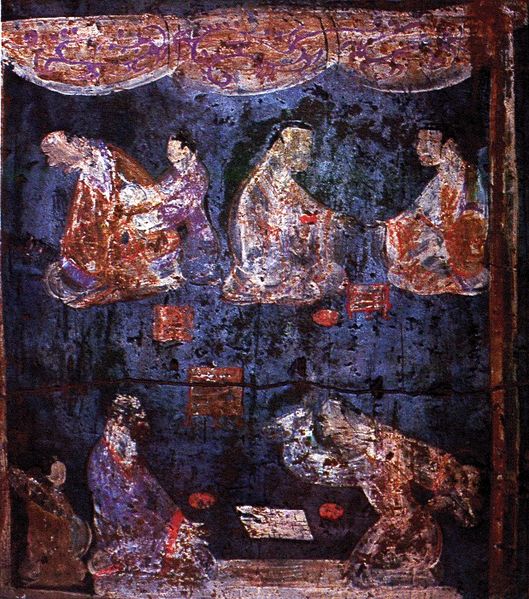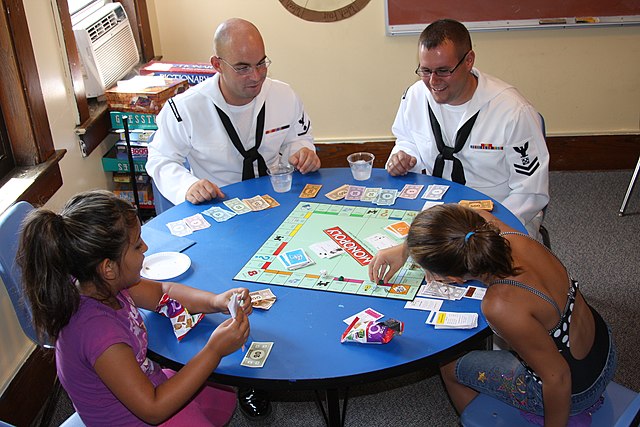Liubo was an ancient Chinese board game for two players. The rules have largely been lost, but it is believed that each player had six game pieces that were moved around the points of a square game board that had a distinctive, symmetrical pattern. Moves were determined by the throw of six sticks, which performed the same function as dice in other race games.
A pair of Eastern Han dynasty (25–220 CE) ceramic tomb figurines of two gentlemen playing liubo
Mural from an Eastern Han dynasty tomb at Luoyang, Henan showing a pair of Liubo players in the foreground, the player on the right with his right hand raised up as if about to throw down the six throwing sticks
Eastern Han glazed pottery tomb figurines playing Liubo, with six sticks laid out to the side of the game board
A lacquered Chinese liubo board game set excavated from Tomb No. 3 of Mawangdui site, Changsha, Hunan province, China, dated to the 2nd century BCE during the Western Han dynasty
Board games are tabletop games that typically use pieces. These pieces are moved or placed on a pre-marked board and often include elements of table, card, role-playing, and miniatures games as well.
The board game Monopoly is licensed in 103 countries and printed in 37 languages.
Young girls playing a board game in the Iisalmi library in Finland, 2016
Senet, one of the oldest known board games
Hounds and jackals (Egypt, 13th Dynasty)








